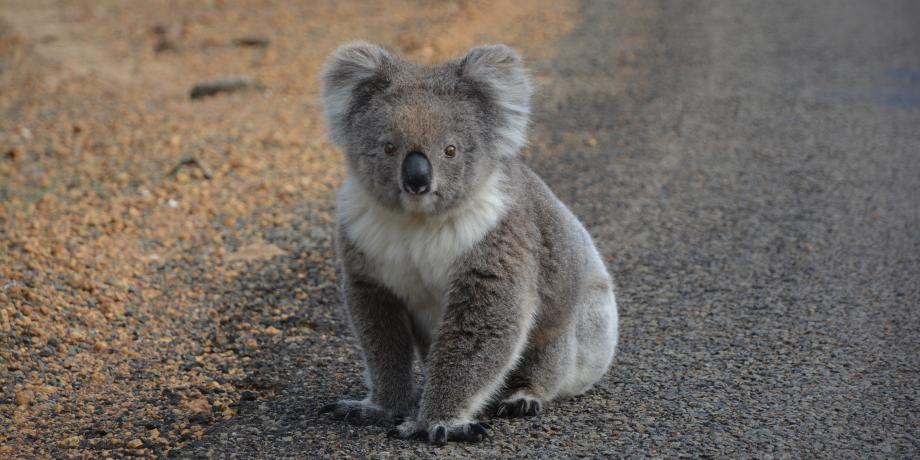
With the approach of the first Koala Fest it is timely to consider wildlife on our roads. Locally the focus is often on kangaroos due to their greater numbers and the higher likelihood of injury to the occupants of or damage to the vehicle. However, it is worth considering the safety of our koala population, as well as our own safety.
While koalas spend much of their time feeding or resting in trees, they also need to come to ground to move between the trees within their home range. This on-ground movement mostly occurs at night, but koalas can be active at any time.
Koalas have little awareness of how dangerous a busy road can be. When an animal appears from nowhere in front of your car there is often little that can be done to avoid it. By following a few simple practices you can help to make roads safer for koalas — which may make the difference between accidentally hurting a koala and knowing that you’ve helped one survive. Some of the things that drivers can do are:
- Make sure you are aware of those areas where koalas are known to cross roads.
- Slow down when you see koala warning signs.
- Be alert for koalas crossing the road. Scan the sides of the road for koalas and watch for koala ‘eyeshine’ (reflections from an animal’s eyes) at night.
Between July and September, male koalas will be moving around in search of mates and trying to establish their dominance over an area. At this time the weaned young, born the previous year, will also be leaving their mothers and moving into adjoining territories. This is the time of year when koalas are at their most vulnerable to being hit by cars.
In addition, the recent local flood events have resulted in koalas being on roads and tracks more frequently as they seek areas of dry ground as they are moving around.
Thinking more broadly - wildlife, especially kangaroos and wallabies, are often drawn to the roadside. They can move fast and be extremely unpredictable. When animals stray onto the road it’s hard to know what they’ll do next.
One in every 41 casualty crashes on country roads involves a vehicle hitting an animal. To reduce the risk and severity of crashes drivers should:
- Never swerve – it is safer to hit an animal than swerve and lose control of your vehicle.
- Brake safely – always apply your brakes in a controlled manner.
- Be aware – animals are more active near waterholes and creeks, and harder to see at sunrise and sunset.
- Reduce your speed – slow down when you see animal warning signs.
- Stay alert – animals are unpredictable, so expect the unexpected.
Only consider moving an injured or dead animal from the road if you can do it safely. An injured animal may bite and scratch. If a marsupial is dead, its pouch should be checked for young, which can be cared for and ultimately released back into the wild. Any handling should be carried out quickly to avoid making the animal struggle and causing it unnecessary stress. To report injured wildlife call WIRES on 1300 094 737.

